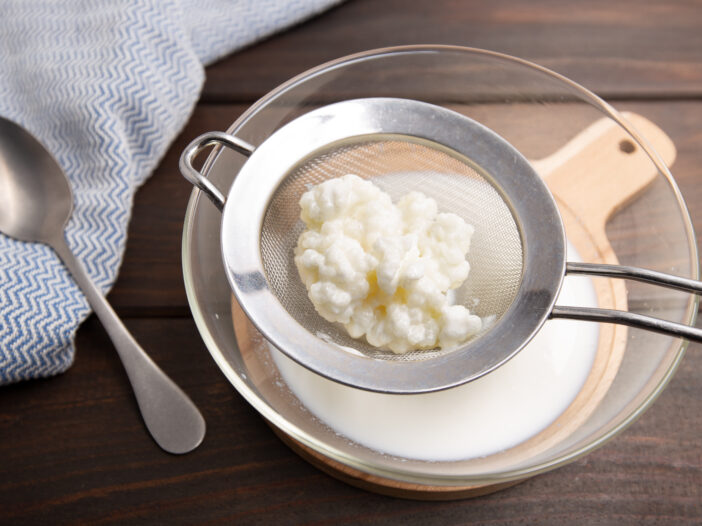
Kefir (kuh-feer’) is a drink cultured from milk using kefir “grains.” It is originally from the Caucasus Mountains in Southern Russia and Georgia between the Caspian and Black Seas. The culture was traditionally kept in skins hanging by the door where family members would turn them as they entered and left.
While it has been consumed for generations in the middle east and has been popular in Europe for a long time, Kefir is just now gaining traction in the United States as a healthy, probiotic wonder drink. It contains several live bacteria known for improving gut health and digestion. They include: Lactobacillus acidophilus, Bifidobacterium bifidum, Streptococcus thermophilus, Lactobacillus delbrueckii subsp. bulgaricus, Lactobacillus helveticus, Lactobacillus kefiranofaciens, Lactococcus lactis, and Leuconostoc species. Seveal of these probiotics consume lactose as part of the fermentation process, so people who are lactose intolerant can usually digest Kefir without issues.
Drinking Kefir as a regular part of your diet can have a positive benefit on general health as well as assisting with many well-known digestive tract diseases. More and more studies are showing a positive correlation between probiotics and gut flora and positive effects on Ulcerative Colitis and Chron’s. Patients report reduced discomfort and reduced bleeding and anecdotal reports make claims of complete remission of symptoms. According to NIH, study in Argentina even demonstrated a reduction of E. coli in test that did not show that same reduction with yogurt.
Many commercial Kefir products are not grown from actual Kefir colonies but are attempts at reproducing the benefits on a commercial scale by combining the bacteria into the mass produced product. Attempts and starting new cultures have not met with success so far, so, if you are making your own Kefir, the culture you are using has probably been passed down for generations.

After fermentation, the Kefir is strained to remove the grains which can then be divided, if necessary, and used to start a new batch. Many people report the grains grow so fast they give them away to others who are interested in starting their own cultures. That seems to be the best way to get started. There has been mixed success with store bought product, but many people report success with cultures they have received directly from others who are producing their own, homemade Kefir.
Leave a Reply